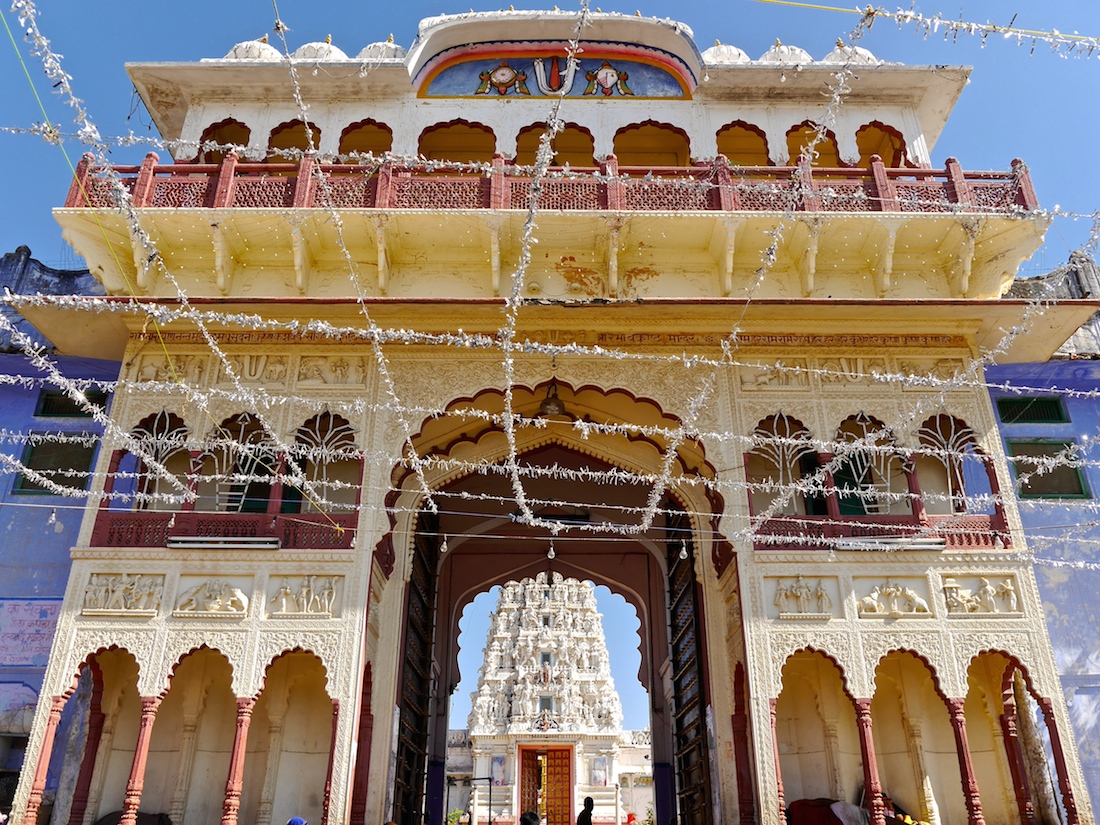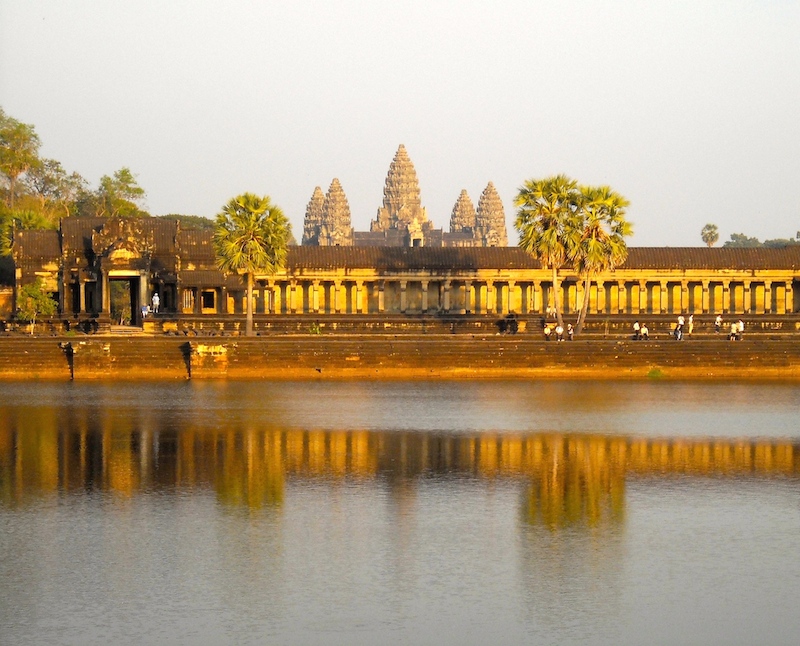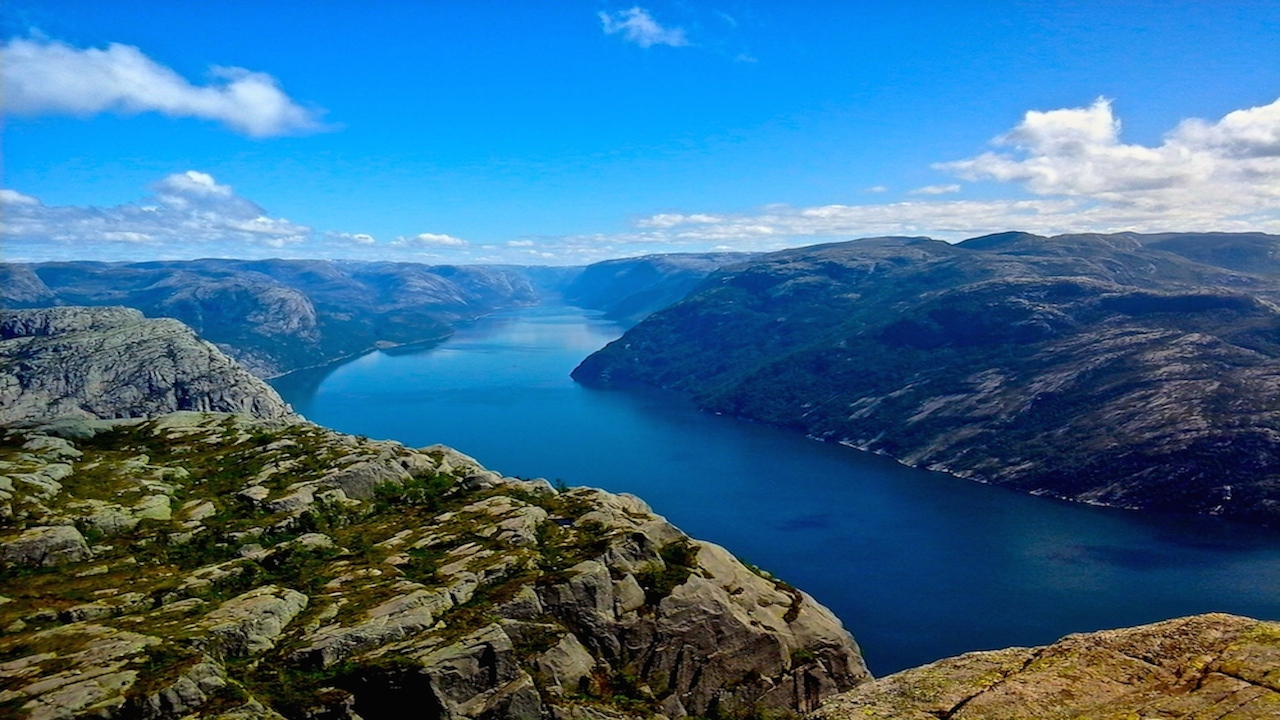Kawah Ijen & Mount Bromo: 2 spectacular active volcanoes in Indonesia you must climb
Did you know that Indonesia with its 130 active volcanoes is the country with the highest number and density of active volcanoes in the world?
A few of these active volcanoes are accessible and it’s possible to climb up to the top and even into the crater of some of them.
We chose to hike the 2 most spectacular active volcanoes in East Java, Mount Bromo and Kawah Ijen.
Hiking Mount Bromo and climbing up and into the crater of Kawah Ijen was the best part of our journey through Indonesia, together with the day we went spotting orangutans in Sumatra.
MOUNT BROMO
Mount Bromo, located in Tenger Semeru National Park in East Java, is an iconic volcano surrounded by impressive landscapes and vast savannas covered with dark grey volcanic sand. It measures 2329 meters and remains active.
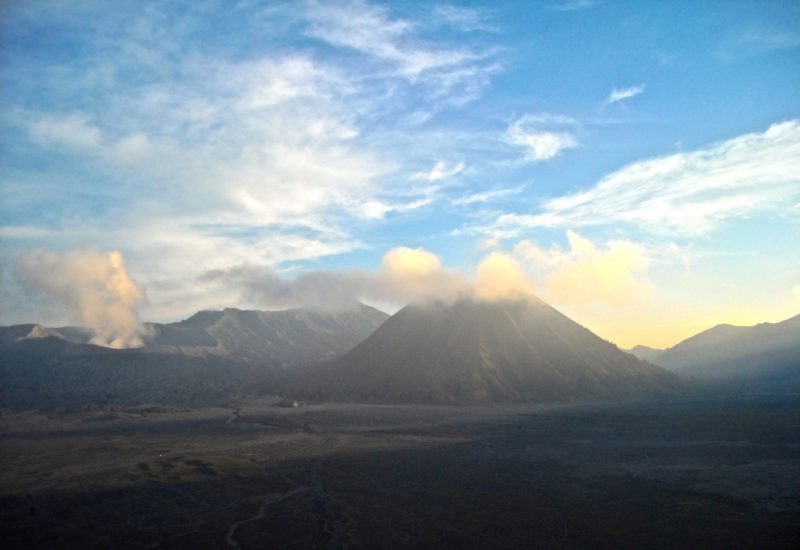
We spent three days in Cemoro Lawang, a village set high in the mountains by Mount Bromo and hiked to the top of the volcano twice. The first day we loved it so much, so we climbed it again the next day!
Reaching the top of Bromo from Cemoro Lawang took us about 1,5 hour. First we walked on the grey sand, enjoying the vastness of the magnificent landscapes, incredibly fresh air and an astonishing view of Bromo in the distance.
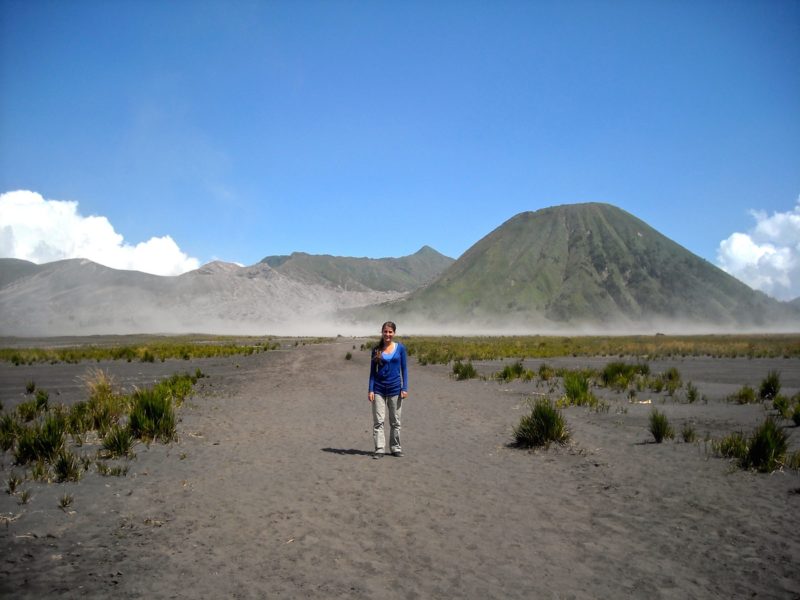
When we reached the bottom of Bromo, we met locals selling snacks and water, while others were offering a ride on a horse to the stairs leading to the top.
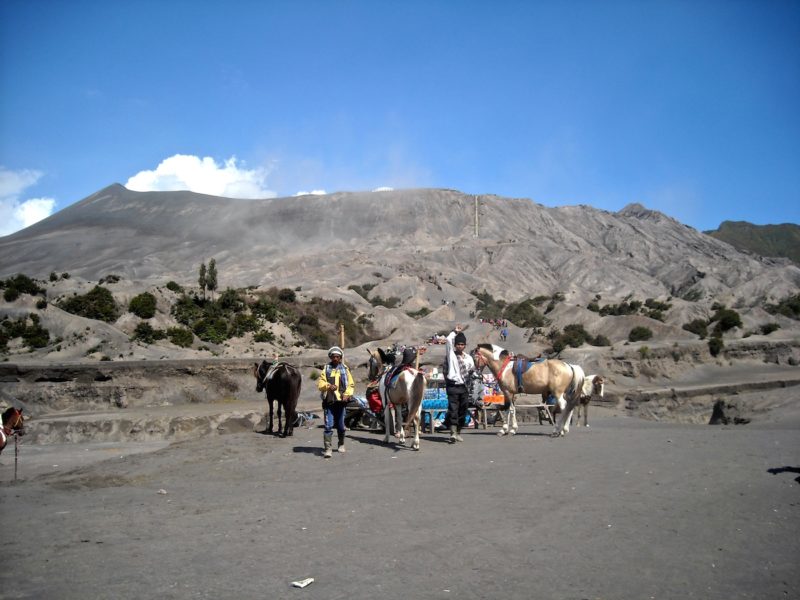
Climbing the volcano was a bit challenging but a good exercise.
At the top, an Indonesian man was selling small bunches of dry purple flowers. Some visitors bought the flowers, threw them inside the volcano making wishes, which we also did. Some of the flowers remained stuck on the upper part of the crater. When the travellers left, the man went carefully down to collect the flowers to sell them again.
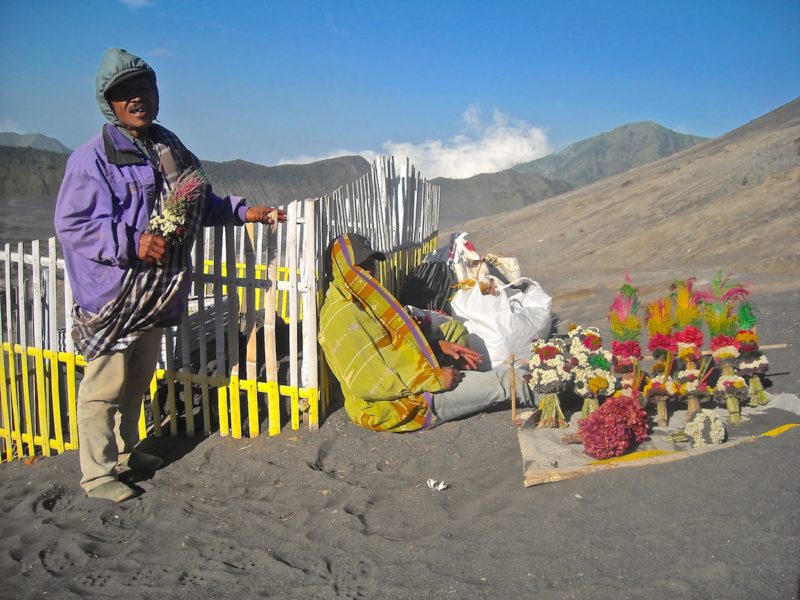
On the way up we had met a guy from Singapore who was mapping volcanoes all over Indonesia. When we reached the top, he started walking on the edge of the crater, which was really dangerous. The path around the edge was very narrow and slippery and just one wrong step and he could have disappeared in the crater! We were watching him and were waiting for an hour to make sure that he was back alive!
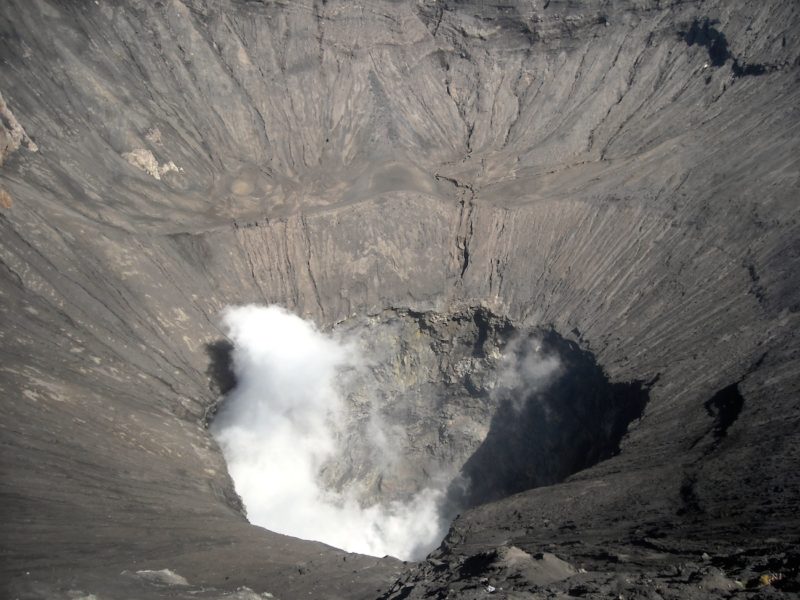
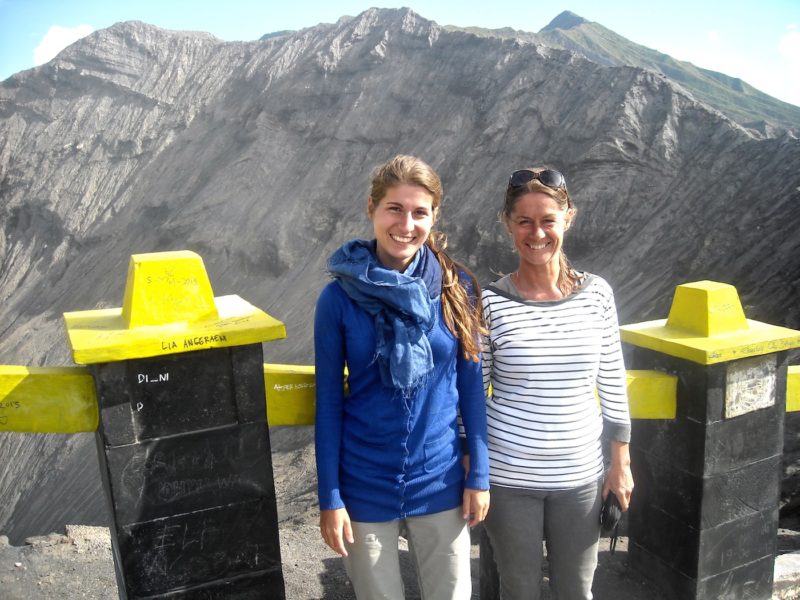
Later we descended slowly, enjoying the view of the glamorous surroundings in the sunshine. We were trekking across the grey savannas back to the village. The sun was going down and we saw horses running in the distance. The landscapes looked magic.
The day that we just spent reminded us of climbing a volcano Paricutin by Uruapan in Mexico.
We loved the dramatic look of the landscapes and the local village, so we decided to stay two more days.
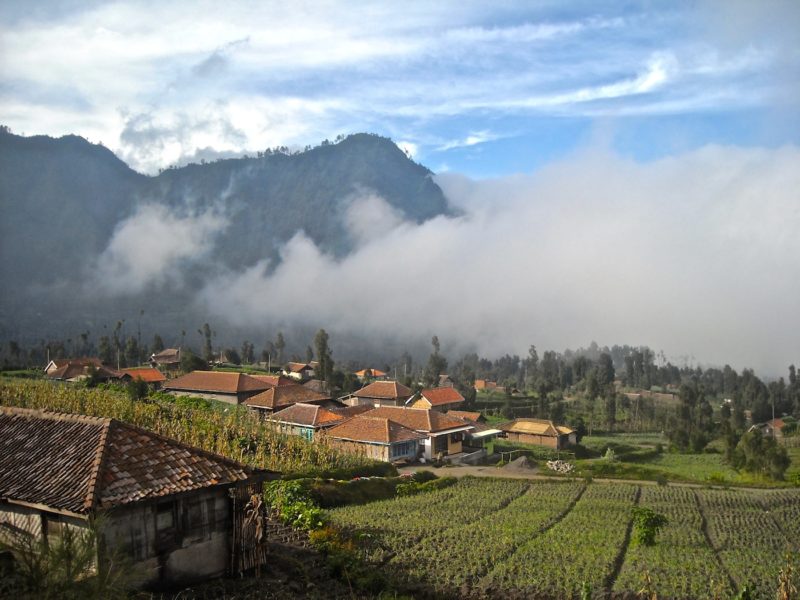
We had enough time to explore the village and taste vegetarian meals in local “warungs”. They served mostly potatoes, tofu, tempeh (traditional Indonesian fermented soya beans), rice and beans. It was the first time we tasted traditional Indonesian coffee with pieces of ginger. It was delicious!
TIPS:
If you want to see the beautiful sunrise over Bromo, you have to climb up Mountain Penanjak, which takes up to 2 hours.
In August during annual Kasava festival, local people throw money, flowers and even small animals into the crater to ask gods for help.
The peak season is in July and August; there’s less rain but more people come to see Bromo so the place is really overcrowded, mainly during the sunrise on Mount Penanjak. It’s also better to avoid weekends.
Bring winter clothes with you. It’s chilly in the night and early in the morning.
It’s possible to travel to Bromo completely independently, there are local buses and minivans from Surabaya to Probbolingo and then to Cemoro Lawang where you can find wide range of accommodation.
KAWAH IJEN
Kawah Ijen, one of the most amazing wonders of Indonesia, is the world’s largest acidic volcanic crater lake. It’s known for its turquoise colour, huge deposits of sulphur and the blue fire that can be seen only in the night.
Ijen is still active and it’s a part of Ijen volcano complex in eastern Java. 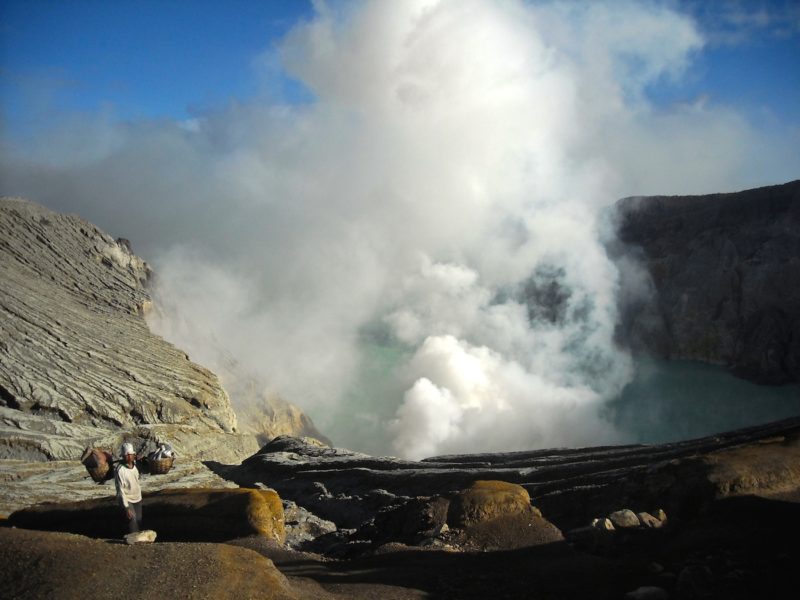
Reaching Ijen was more challenging than climbing Bromo. We arrived to Bondowoso (Bandyuwangi is another option) by local bus, found accommodation and started looking for somebody who could drive us to Ijen in the night because we knew that it would be fascinating experience to see the blue fire coming out of sulphur in the night.
We met a couple from Spain who were also looking for a driver and later managed to find a local man on the night market in the town who was willing to take us to Ijen. We agreed on a price and at midnight we were off to Ijen.
The journey took about an hour. We were dropped off at the base of Ijen. The night was dark and the path leading to the top of the crater was 3 km long. That night the full moon illuminated the path, which made the ascent easier and added to the mysterious atmosphere of the place. Suddenly a few local travellers joined us. Later we met some local men who were going down to the crater to collect sulphur and carry it up.
The steep walk seemed to be long because we hadn’t had any sleep that night, and felt quite tired.
When we were approaching the crater we could feel the smell of sulphur and realised that we should have brought a mask. Fortunately we had our scarves at least so we were holding them over the nose and mouth. When we reached the edge of Ijen crater we looked down and stayed breathless. The bottom of the crater looked like a hell! There was steam everywhere and blue fire in some places. The moving workers looked like devils in the dark night with flashes of purple, blue and yellow.
We started going down very slowly because the sulphur surface was very slippery and we could have ended up in the fire or acidic water of the crater easily.
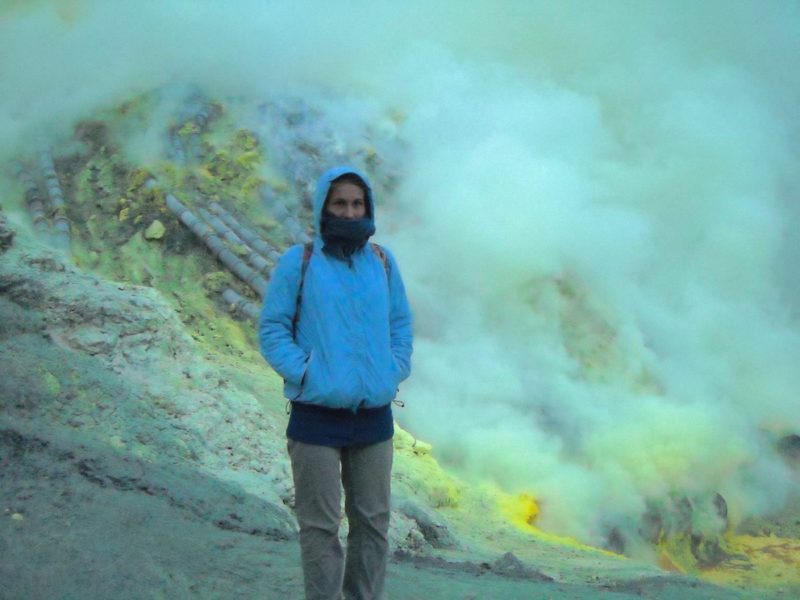
It was about 4 a.m. when we reached the bottom of the crater.
There were just the Spanish couple, the Indonesian travellers, us and a few locals harvesting sulphur.
Each of the workers had two baskets that held 80 kilograms together, 40 kg in each basket. The Spanish guy tried to lift up the baskets but it was so heavy that he wasn’t able to do it. The locals were used to it. They were very thin but strong and looked older than they were.
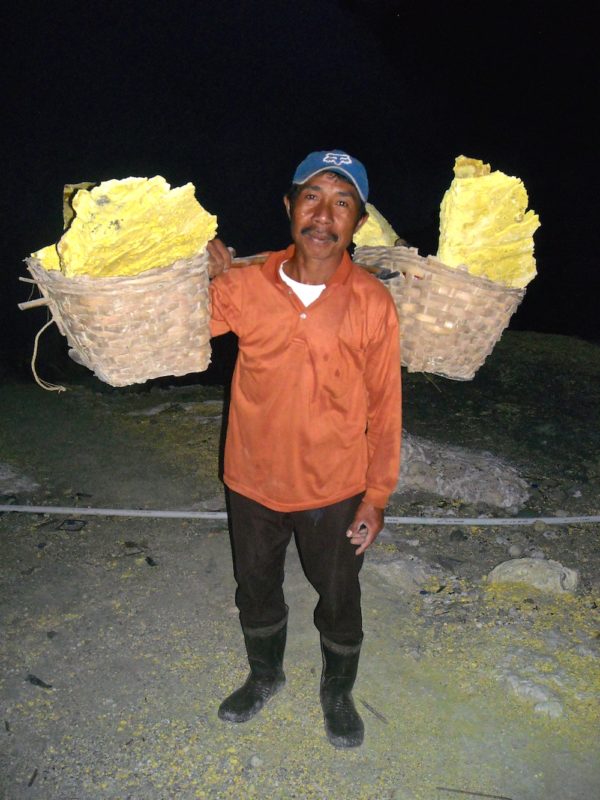
Once they filled their baskets with pieces of sulphur, they climbed up the steep sulphur hill to the edge of the crater carrying 80 kilos. After a short rest, they walked down the path 3 km to the village.
The sulphur workers go up the volcano and down with those 80 kg of sulphur 3-4 times a day. Every day. They get paid 3 euros per every 80 kilos they hand over to the collectors who wait for them at the base of the volcano.
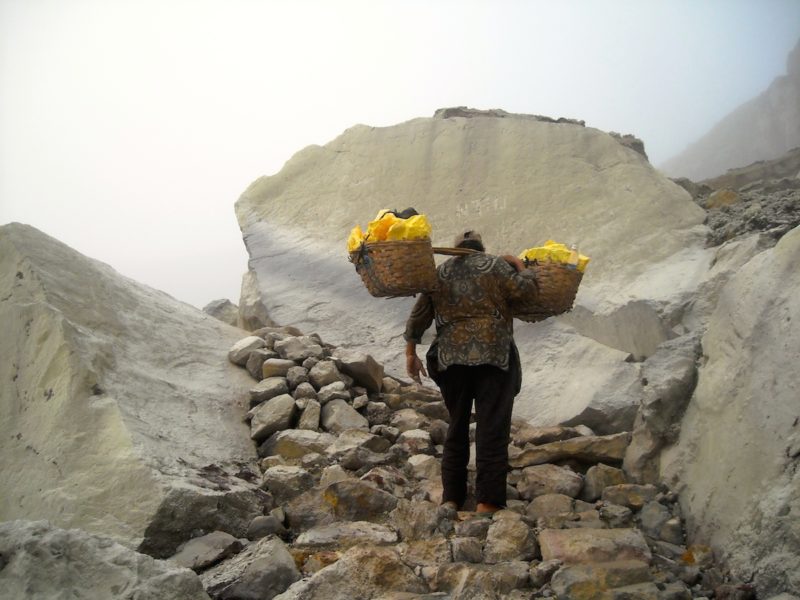
And how did it look like at the bottom of the crater?
Our attention was most of the time drawn to the blue fire that was coming out of sulphur vents. Yes, the fire was really blue! The flames were actually not fire but molten sulphur that is transparent during the day and turns blue in the night.
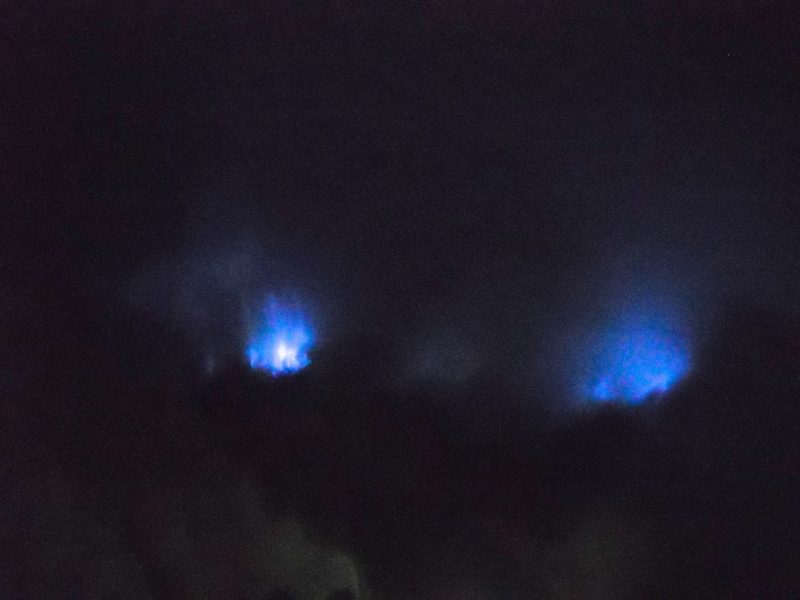
We waited for the sunrise and when the sun rose over the sulphur basin, we were awarded with a fantastic view of turquoise water of the crater lake and surrealistic surroundings of the crater. The unusual color of the lake is caused by the hydrochloric acid contained in the water.
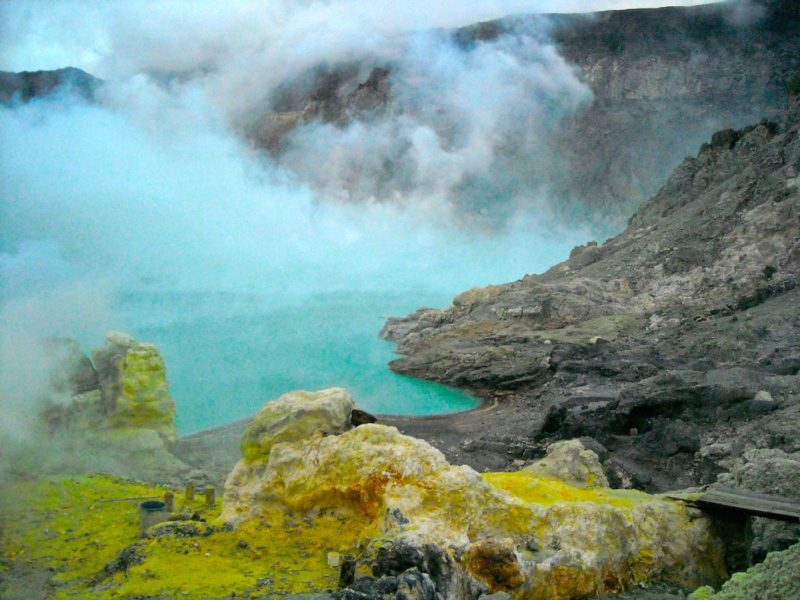
At around 7 a.m. we walked up to the edge of the crater. The view from there in the daylight was amazing, very different from what we saw when we first got to that point in the night.
First we couldn’t see much of the acidic lake as most of the crater was covered with sulphur smoke. It was quite a cloudy morning that day too and clouds were literally falling over the edge inside the crater.
About an hour later, once the sky was clear, we had an excellent view of the whole basin – the sulphur vents, the acidic lake and all the dramatic landscape that resembled the moonscape.
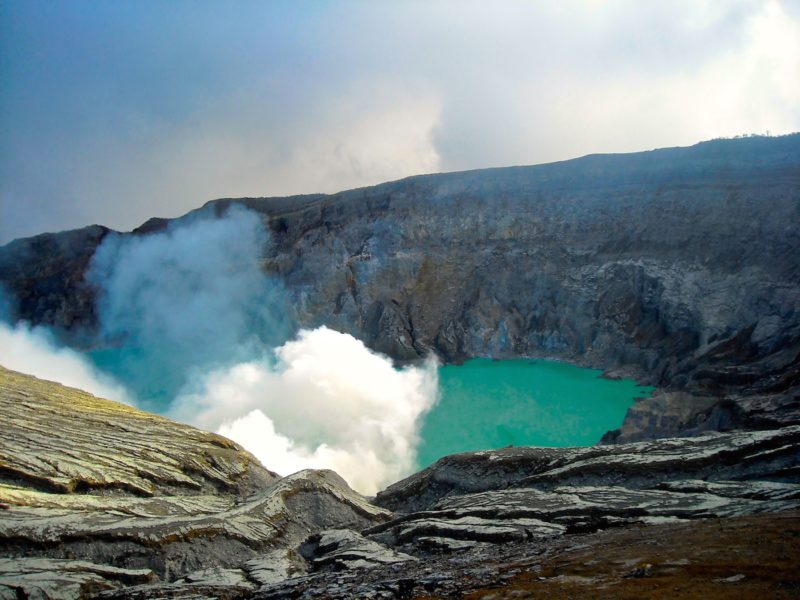
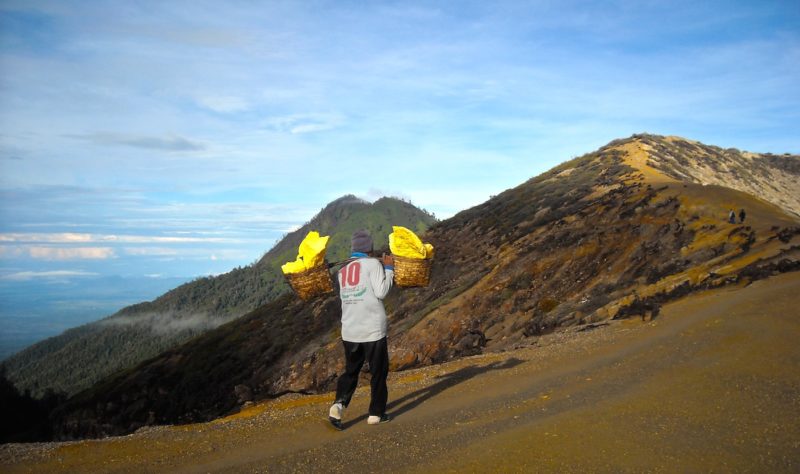
When organised tours with tourists started arriving, we walked back down where our driver was waiting for us the whole night.
We had a lovely breakfast in a local restaurant, then went back to Bondowoso and went straight to bed to have a good rest after the long night hike.
Climbing Mount Bromo and hiking up and into Kawah Ijen was a challenging but extraordinary experience that we highly recommend to everybody who travels in Indonesia.
Have you climbed any of these two volcanoes or any other volcanoes in Indonesia?
What was your experience?
Did you like this post? Would you like to stay up to date with our new adventures?
‘Like’ our Facebook Page – and we will keep you informed!


